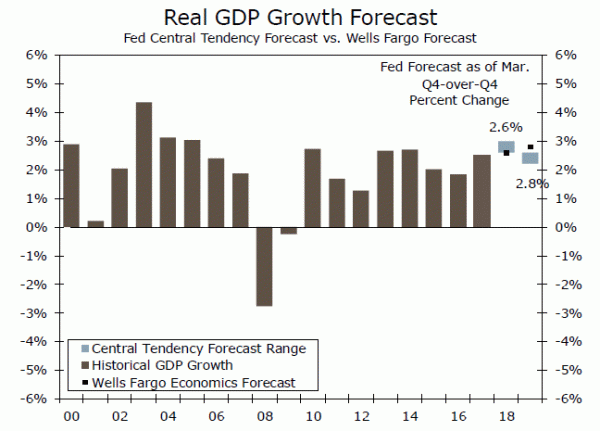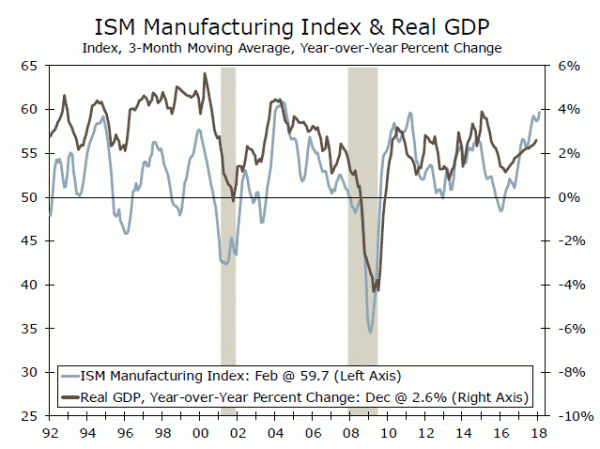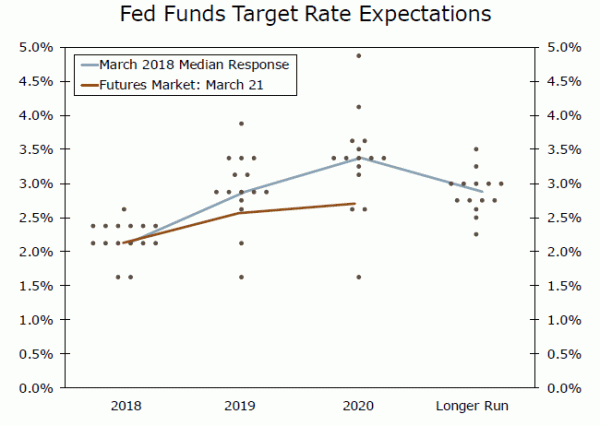As expected, the Fed hiked the federal funds rate by a quarter percentage point. The FOMC slightly boosted the target range for the funds rate in spite of slightly downgrading its view of recent economic conditions.
The Fed Feels They Finally Have the Wind at Their Back
The Fed’s resolve to normalize interest rates clearly trumped any concerns about disappointing first quarter economic data. The opening paragraph of the FOMC policy statement readily acknowledges economic activity has been rising at a moderate rate (as opposed to solid) and “household spending and business fixed investment had moderated from their strong fourth quarter readings.” The slight downgrade to recent economic conditions was offset by an upgrade to its assessment of the labor market, where “job gains have been strong” and the “unemployment rate has remained low.”
The significance of the Fed’s move in the face of this softer data is that the Fed has more confidence in the economy’s underlying momentum and appears to be more determined to normalize interest rates. Indeed, the FOMC’s median expectations for GDP growth for 2018 and 2019 were increased from 2.5 percent and 2.1 percent to 2.7 percent and 2.4 percent, respectively. Moreover, the median expectations for the unemployment rate were lowered by 0.1 percentage point in 2018, 0.3 percentage points in 2019 and 0.4 percentage points in 2020 to 3.8 percent, 3.6 percent and 3.6 percent, respectively.
Trust the Dots
Jay Powell’s first FOMC meeting appears to have a short and concise message for the financial markets: trust the dots. The stronger jobs data and stronger survey data (such as the ISM, regional Fed surveys and consumer confidence surveys) all suggest the economy is growing much more broadly and is more resilient. Moreover, with fiscal policy turning more stimulative, the Fed feels it finally has the wind at its back and appears to be determined to use this opportunity to bring short-term interest rates closer to their new normal. This means it is more likely to follow through with planned rate increases even if the economic data stumble a bit or face some sort of exogenous shock. The gap between the market’s expectations for the federal funds rate and the dots laid out in the summary of economic projections should narrow further. One closely watched aspect of the March FOMC meeting was whether a majority of FOMC participants would opt for four rate hikes in 2018 as opposed to the three outlined at the December meeting. Seven of the fifteen dots now have the Fed raising interest rates four or more times this year, which is one more than in December. Eight participants are looking for three or fewer hikes (one of which has already occurred). A majority now sees three hikes in 2019, up from two in December and two participants now see the longer run federal funds rate above 3.0 percent, which had been the upper end of expectations at prior meetings. If economic growth is as strong as the FOMC’s current expectations, we would expect the Fed to raise interest rates more than it has currently outlined. We have four rate hikes in our 2018 forecast and expect another dot or two to join us in coming months.














